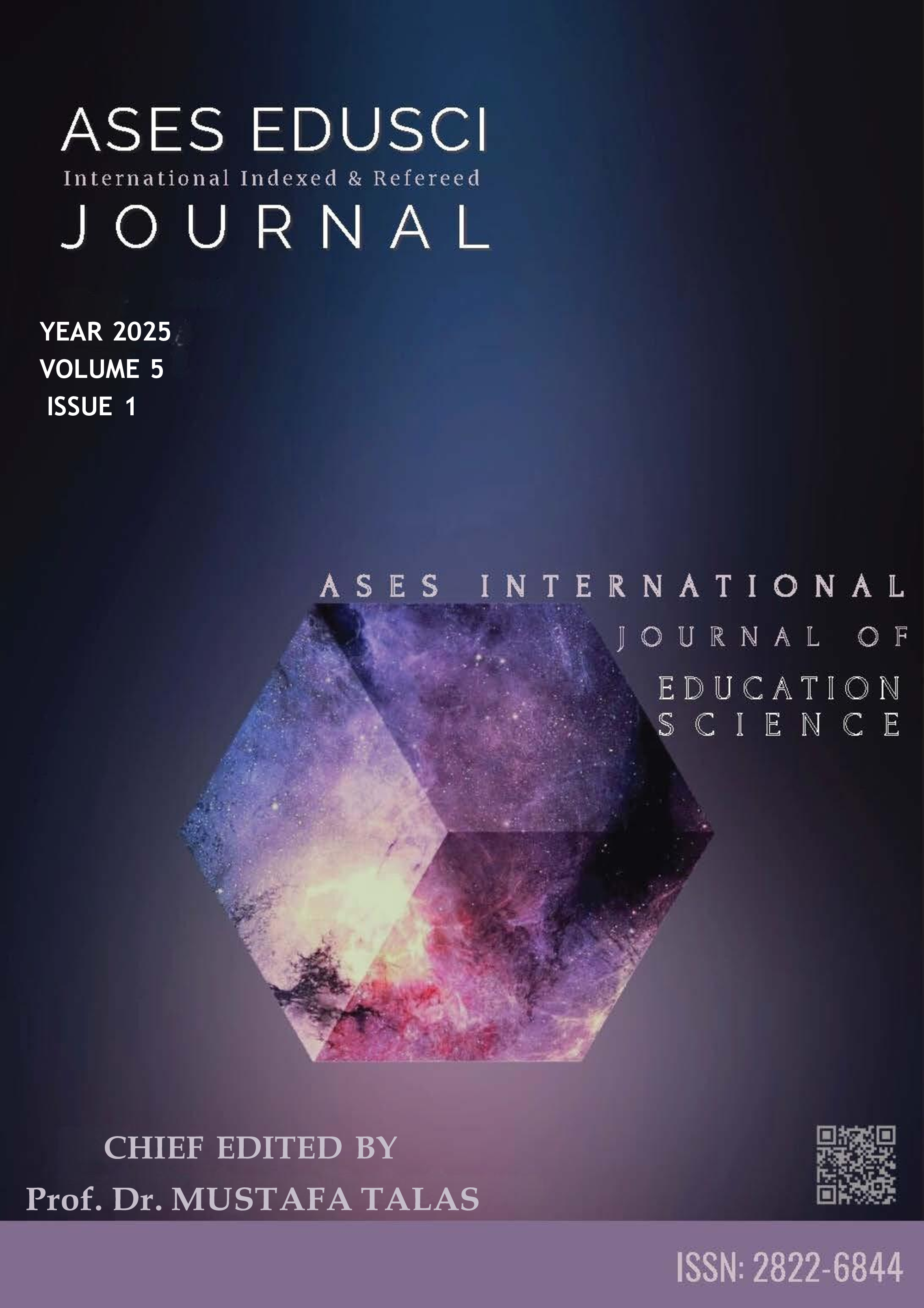The Impact of The Individual Language Learning Program (ILLP) On High School Students’ Language Development
DOI:
https://doi.org/10.5281/zenodo.15719338Keywords:
Individual language learning, AI-assisted education, high school students, language skills, self-regulation, digital literacyAbstract
This study explores the impact of an Artificial Intelligence-supported Individual Language Learning Program (ILLP), implemented at the high school level, aimed at guiding students from A2 to B1 proficiency. The research adopts a descriptive design and involves 60 students who participated in an intensive 10-week program, totaling 80 instructional hours. The ILLP was structured to promote individualized learning pace, enhance the four core language skills (reading, writing, listening, and speaking) and develop learners' self-regulation, digital literacy, and positive attitudes toward language learning through the integration of AI tools. The primary data collection instrument was a structured questionnaire designed to evaluate students’ language progress, self-perceptions, and experiences with technology-enhanced learning. Results revealed significant improvements in all four language skills. Moreover, the program fostered higher levels of self-awareness, independent study habits, and the ability to use digital tools effectively in learning processes. Students expressed positive views on the adaptability, engagement, and interactive nature of AI-assisted content, highlighting how it responded to their individual needs more efficiently than traditional classroom methods. In conclusion, the findings underscore the effectiveness of AI-integrated, personalized language learning environments in promoting both linguistic competence and 21st-century skills such as digital literacy and autonomous learning. The ILLP model represents an innovative and flexible approach that aligns with inclusive education policies and supports differentiated instruction. Broad implementation of such programs could contribute to reducing inequalities in language education by offering tailored support to diverse learners. This study provides compelling evidence that artificial intelligence, when pedagogically grounded, can enhance not only language acquisition but also students’ motivation and confidence in navigating their learning journeys independently.
References
Anderson, L. W. (2013). Increasing teacher effectiveness. UNESCO.
Bachman, L. F., & Palmer, A. S. (2010). Language assessment in practice. Oxford University Press.
Benson, P. (2011). Teaching and researching autonomy in language learning (2nd ed.). Routledge.
Bruner, J. (1966). Toward a theory of instruction. Harvard University Press.
Council of Europe. (2020). Common European Framework of Reference for Languages: Learning, teaching, assessment – Companion volume. Council of Europe Publishing. https://www.coe.int/en/web/common-european-framework-reference-languages
Crystal, D. (2003). English as a global language (2nd ed.). Cambridge University Press.
Demirel, Ö. (2012). Yabancı dil öğretimi: İlkeler, yöntemler, teknikler. Pegem Akademi.
European Schoolnet. (2018). The future classroom: A handbook for teachers. https://fcl.eun.org
Godwin-Jones, R. (2018). Using mobile technology to develop language skills and cultural understanding. Language Learning & Technology, 22(3), 2–11. https://doi.org/10.10125/44639
Graddol, D. (2006). English next. British Council.
Grgurović, M. (2017). Blended language learning: Research and practice. In C. A. Chapelle & S. Sauro (Eds.), The handbook of technology and second language teaching and learning (pp. 135–152). Wiley-Blackwell.
Hattie, J. (2012). Visible learning for teachers: Maximizing impact on learning. Routledge.
Knowles, M. S. (1980). The modern practice of adult education: From pedagogy to andragogy (2nd ed.). Cambridge Books.
Kukulska-Hulme, A. (2020). Mobile-assisted language learning [MALL]. In S. Thouësny & L. Bradley (Eds.), CALL and complexity – short papers from EUROCALL 2020 (pp. 212–216). Research-publishing.net. https://doi.org/10.14705/rpnet.2020.48.1192
Kukulska-Hulme, A. (2020). Mobile-assisted language learning [Revisited]. In M. Carrier, R. M. Damerow, & K. M. Bailey (Eds.), The Cambridge handbook of language learning technology (pp. 217–233). Cambridge University Press.
Little, D. (2007). Language learner autonomy: Some fundamental considerations revisited. Innovation in Language Learning and Teaching, 1(1), 14–29. https://doi.org/10.2167/illt040.0
Oxford, R. (2003). Toward a more systematic model of L2 learner autonomy. In D. Palfreyman & R. Smith (Eds.), Learner autonomy across cultures (pp. 75–91). Palgrave Macmillan.
Oxford, R. L. (2003). Learning styles and strategies: An overview. GALA, 1–25.
Stockwell, G. (2012). Using mobile phones for vocabulary activities: Examining the effect of the platform. Language Learning & Technology, 14(2), 95–110.
Tomlinson, C. A. (2014). The differentiated classroom: Responding to the needs of all learners (2nd ed.). ASCD.
UNESCO. (2021). Futures of education: A new social contract. https://unesdoc.unesco.org/
UNESCO. (2023). Transforming education: Global report on inclusive and equitable quality learning. https://unesdoc.unesco.org/
Vygotsky, L. S. (1978). Mind in society: The development of higher psychological processes. Harvard University Press.
Warschauer, M., & Kern, R. (2000). Network-based language teaching: Concepts and practice. Cambridge University Press.
Zimmerman, B. J. (2002). Becoming a self-regulated learner: An overview. Theory into Practice, 41(2), 64–70. https://doi.org/10.1207/s15430421tip4102_2
Downloads
Published
How to Cite
Issue
Section
License
Copyright (c) 2025 ASES EDUSCI (INTERNATIONAL JOURNAL OF EDUCATIONAL SCIENCES) ISSN: 2822-6844

This work is licensed under a Creative Commons Attribution-NonCommercial 4.0 International License.


